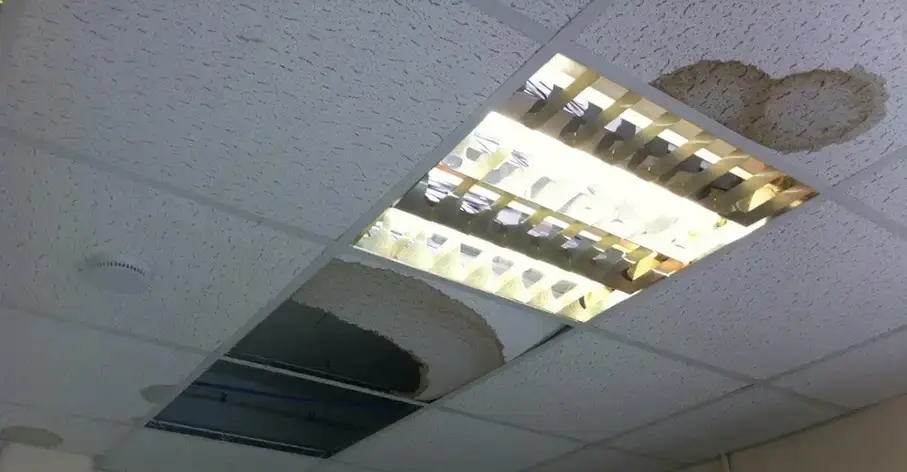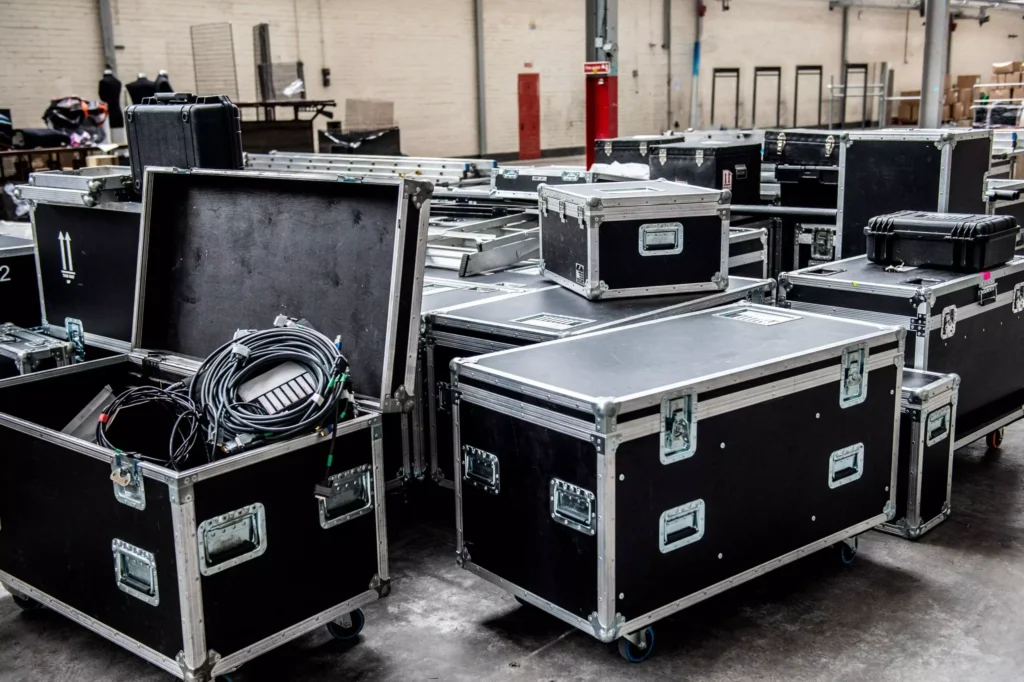The Problem
At Middlesex University’s Platt Halls of Residence, a devastating fire began in a small storage yard near the rear of the accommodation blocks. The flames quickly spread to adjacent workshops and warehouses, which were primarily constructed of wood. The highly flammable materials fuelled the fire, putting the entire student residence complex at risk.
Firefighters fought valiantly to contain the blaze, resorting to using the blocks themselves as a wet wall to control the spread. After four and a half intense days, the fire was finally extinguished, but the damage was significant.
The destruction included:
- Exploded windows on the rear of the building due to extreme heat, allowing the fire to enter some third-floor rooms.
- Wooden roof joists completely burned, leading to a roof collapse.
- Extensive water damage from thousands of gallons of water pumped into the building, saturating walls, floors, and ceilings on every level.
- Kitchens, constructed from chipboard, swollen beyond repair due to water absorption.
- Fitted wardrobes and cupboards in student rooms were also ruined.
- Soot contamination in fabrics and furnishings across affected areas.
The fire impacted three four-story blocks, each with eight apartments. With 56 bedrooms and one communal kitchen per block, this amounted to a total internal volume of 2,325 m³ requiring urgent restoration. The extent of the water and fire damage made traditional drying equipment impractical, as it would take months to fully restore the buildings.
The Solution
We deployed a cutting-edge pressurised chamber drying system powered by hydronic heaters, the fastest and most efficient method for large-scale water damage restoration. This system leveraged heat and positive air pressure to dry the buildings quickly and thoroughly, then enabling our team to carry out fire damage restoration.
Key steps included:
- Hydronic Heaters Installation: Two heaters were set up, each equipped with one water heater and six heat exchangers.
- Heat Exchanger Placement:
- Two heat exchangers were positioned in each apartment, one in the kitchen window to generate heat and positive pressure, and another at the far end of the corridor for additional heat.
- Temporary repairs were made to broken windows, with slight venting to allow positive pressure to escape and facilitate drying.
- Simultaneous Drying: With two hydronic heaters operating, six apartments could be dried simultaneously, dramatically reducing restoration time.
This innovative approach proved far superior to traditional dehumidifiers, which would have required 12 weeks per phase to dry each block.
The Result
The use of hydronic heating delivered remarkable time and cost savings:
- Drying Time Reduced by 91%: The project required only 7 days per phase compared to 84 days using conventional equipment, saving 77 days per phase.
- Total Time Saved: Across the three blocks, a potential total of 385 days was saved, minimising disruption for students and financial losses for the university and insurers.
- Cost Efficiency: Faster restoration reduced temporary accommodation costs for 168 displaced students and limited financial burdens on all stakeholders.
This case highlights the critical role of advanced fire damage restoration methods in mitigating the long-term impacts of catastrophic events. With swift action, we restored the buildings efficiently, ensuring students could return to safe, comfortable accommodation with minimal delays.
By leveraging innovative technology and expertise, we not only preserved the structural integrity of Platt Halls of Residence but also delivered a solution that saved time, money, and resources on an unprecedented scale.
For professional fire damage restoration services that deliver fast and effective results, trust us to protect your property and restore your peace of mind. Talk to us.





















